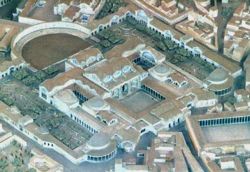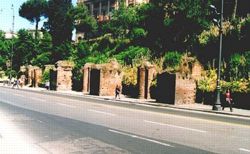 | The baths of Titus (81 AD). |
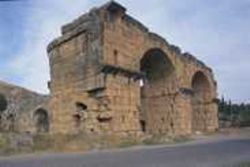 | The baths of Domitian (95 AD). |

| The baths of Trajan (c. 100) today (top) and in a reconstruction of Rome's city centre (below). |
The "Antonine Baths" of Emperor Caracalla
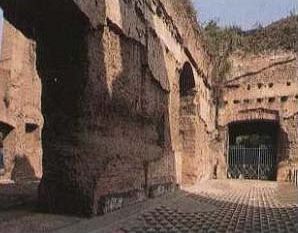 The baths were of immense size and incredible luxury and splendour. Their construction was begun in 206 AD under emperor Septimius Severus and completed by his son, emperor Caracalla, in 216. The baths could accommodate 1,600 visitors in three main bath chambers: a cold room (frigidarium), a lukewarm room (tepidarium) and a hot room (caldarium). A great hall was located between the frigidarium and the tepidarium; it was covered by an enormous vault. Several large open air swimming pools completed the complex. The original building complex was lavishly decorated with scupltures, mosaics, frescoes and other artwork. Marble was used in all parts of the building. The Baths were in continuous use for 300 years. Today's ruins and excavations are the largest existing remnants of any Roman bath. Their central bath chambers cover an area of 230 by 115 m. They are surrounded by courts and auxiliary rooms and an exercise garden. |
|
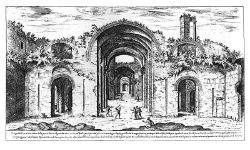
The baths covered an area of 110,000 square metres and were designed for thousands of visitors. A church was later built into a single of its rooms, and in 1561 Michelangelo built another church into the central hall of its frigidarium. | The baths of Diocletian (c. 302). Drawing by Etienne du Pérac, |
